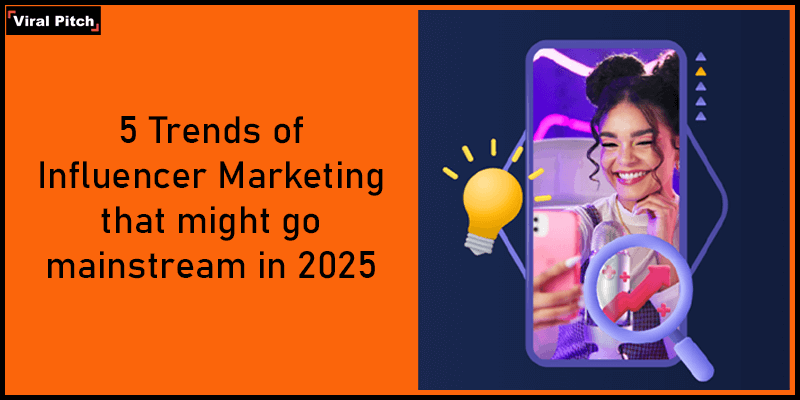5 Trends of Influencer Marketing that might go mainstream in 2025

Influencer marketing has become a significant component of digital advertising and consumer communication strategies. As social media usage increases globally, brands rely on creators to support product visibility, storytelling, and community engagement. By 2025, several developments are expected to influence the evolution of influencer collaborations, driven by changes in platform dynamics, audience expectations, and analytical capabilities. The following sections outline major trends anticipated to shape influencer marketing throughout the year.
1. Firework Campaigns: High-Impact Micro Bursts
Firework campaigns are short, concentrated marketing activations in which multiple influencers release synchronized or near-synchronized content. These campaigns aim to generate immediate attention and social buzz by leveraging real-time trends or event-based opportunities.
Influencer Marketing Platforms increasingly support these formats by offering scheduling tools, mass creator coordination, and performance tracking capabilities.
2. Social-First Content Strategies
A social-first strategy prioritizes the creation of native content tailored specifically to individual social platforms rather than adapting traditional marketing materials. This includes short-form videos, live content, interactive features, and platform-specific trends.
Influencer Marketing Agencies often oversee these strategies, helping brands manage content volume and maintain consistency across multiple platforms where posting frequency and trend alignment are critical to visibility.
3. 360° Content Integration Across Marketing Channels
Influencer-generated content is anticipated to be used across a broader range of marketing channels by 2025. Brands are increasingly integrating creator output into email marketing, product pages, paid advertisements, outdoor media, packaging, and internal communication materials.
This shift reflects rising consumer trust in authentic creator content. Influencer Marketing Platforms now include rights management and multi-channel attribution tools to support this expanded usage.
4. In-Person Brand Experiences and Hybrid Activations
Hybrid marketing strategies that blend digital and physical experiences are projected to grow in 2025. Brands are expected to host pop-up events, creator meet-ups, immersive activations, and exclusive previews.
Such events allow influencers to share personal, unfiltered impressions with their audiences, strengthening authenticity and enhancing brand-consumer relationships.
5. Employee-Generated Content (EGC)
Employee-Generated Content involves internally produced videos, photos, or informational posts created by company staff. EGC is expanding due to its relatability and behind-the-scenes perspective, which contribute to greater consumer trust.
Organizations are investing in employee training programs that encourage content creation, often using EGC alongside influencer-generated material to diversify messaging and enhance authenticity.
Additional Trends Influencing Influencer Marketing in 2025
6. Emphasis on Return on Investment (ROI)
The industry continues to adopt more sophisticated measurement tools, shifting attention toward quantifiable outcomes such as conversions, customer acquisition costs, and long-term value. Brands utilize advanced attribution modeling and analytics available through Influencer Marketing Platforms to calculate performance more accurately.
Performance-based compensation models - such as commission systems—are also becoming more common.
7. Growth of Micro and Nano Influencers
Micro and nano influencers are expected to maintain strong influence due to their high engagement rates and strong community connections. These creators cater to niche audiences, making them ideal for targeted campaigns.
Brands rely on data-driven tools to find the top influencers within specific interest groups, improving targeting precision and cost efficiency.
8. Transparency and Authenticity as Ethical Standards
Authenticity remains a core factor in influencer effectiveness. Influencers are expected to maintain transparency regarding paid partnerships, adhere to regional disclosure regulations, and provide genuine, experience-based recommendations.
Consumers increasingly favor long-term creator-brand partnerships, which they perceive as more trustworthy.
9. Evolution of Platforms and Content Formats
Influencer marketing in 2025 is shaped by the continued rise of short-form video content, live commerce, podcasts, and AI-assisted editing tools. As platforms introduce new features, creators adopt diverse formats to maintain audience engagement.
Growth in augmented reality filters and interactive digital experiences also contributes to new storytelling approaches.
10. Integration With Broader Brand Strategy
Influencers are increasingly regarded as strategic partners rather than solely promotional collaborators. Brands integrate creators into product development, early testing, community-building efforts, customer education, and advisory panels.
This shift reflects the expanding role of creators within full-funnel marketing strategies, from awareness to retention.
Industry Outlook
The influencer marketing ecosystem in 2025 is expected to emphasize authenticity, analytics, cross-platform visibility, and deeper creator-brand collaboration. Brands utilizing an Influencer Marketing Platform or working with an Influencer Marketing Agency may be better positioned to adapt to these developments, particularly in identifying relevant talent and managing large-scale campaigns.
The ability to accurately find the top influencers within relevant niches remains a determining factor in achieving meaningful engagement and measurable outcomes.
Conclusion
Influencer marketing in 2025 reflects a mature, data-driven industry shaped by technological innovation and evolving consumer expectations. Key developments - including firework campaigns, social-first creative strategies, EGC integration, hybrid events, and advanced measurement techniques - are expected to influence how brands collaborate with creators.
Organizations that prioritize authenticity, transparency, and strategic alignment will be better prepared to succeed within an increasingly competitive digital environment.